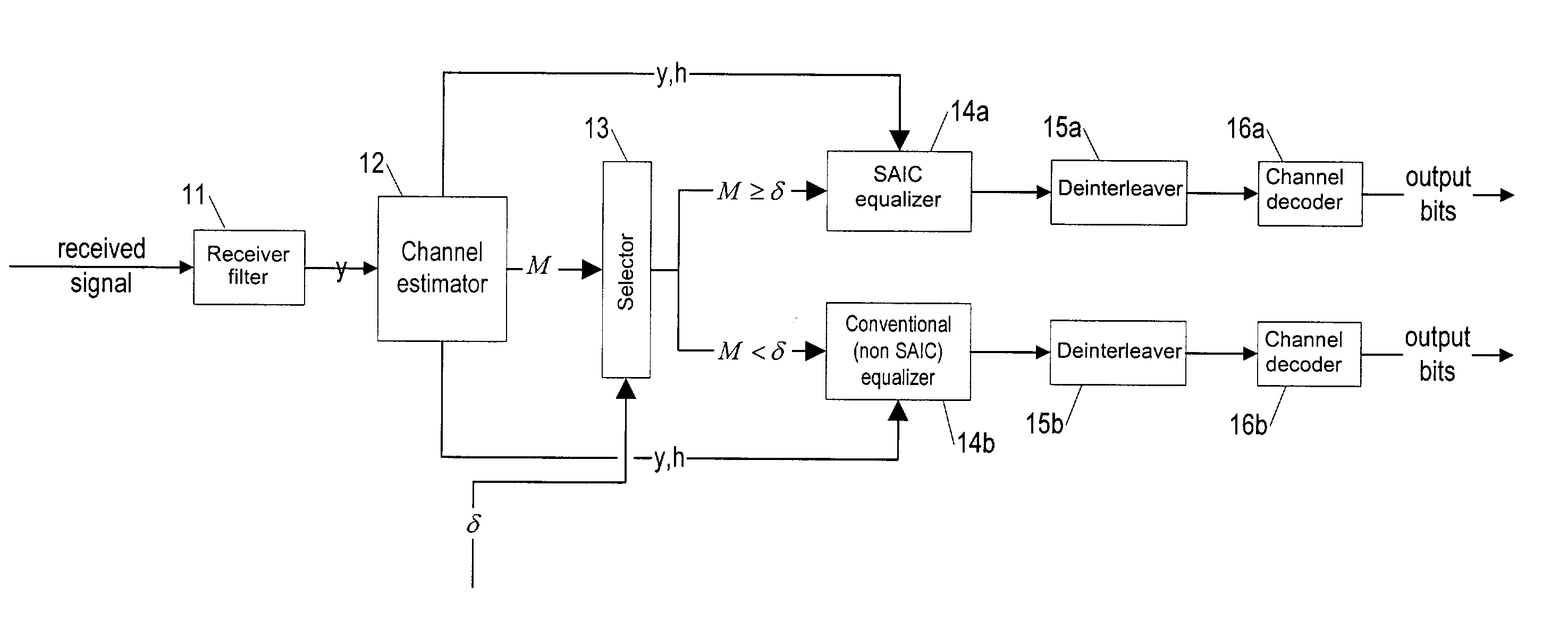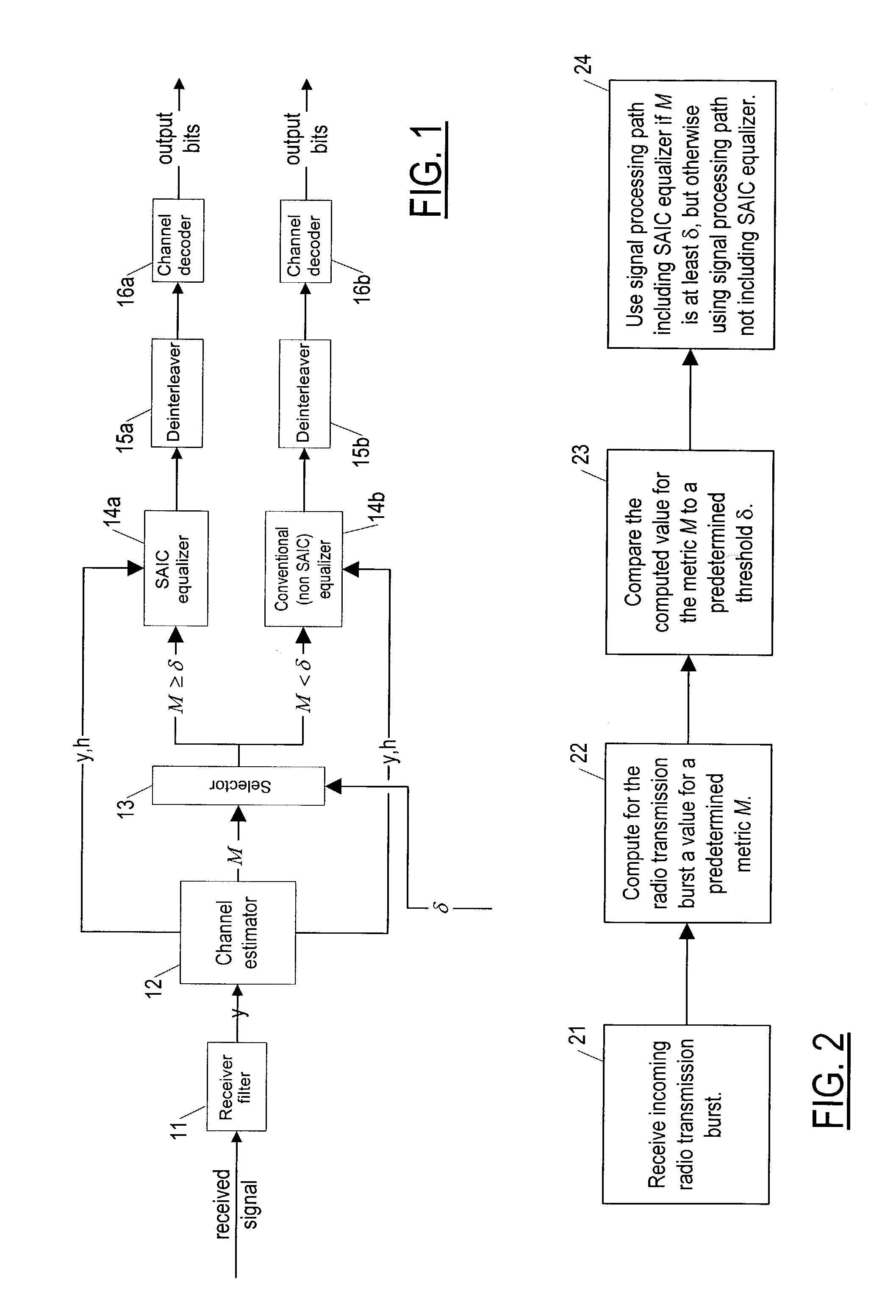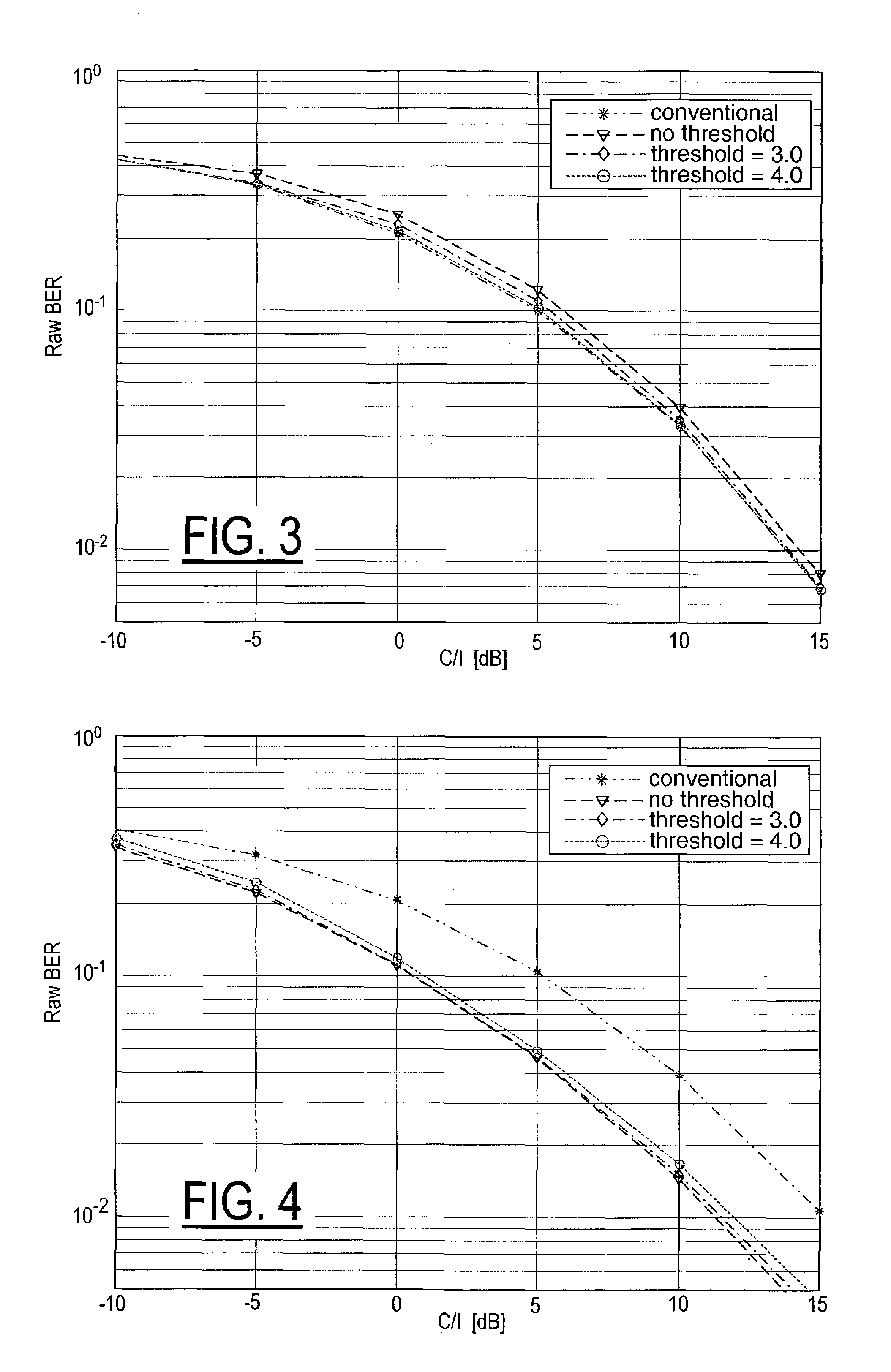Method and apparatus for switching on and off interference cancellation in a receiver
a receiver and interference technology, applied in the field of cellular telephony receivers, can solve the problems of reducing the performance of the receiver compared to a non-saic conventional receiver, difficult to use more than one antenna, and affecting the reception of the mobile terminal using the cellular network
- Summary
- Abstract
- Description
- Claims
- Application Information
AI Technical Summary
Benefits of technology
Problems solved by technology
Method used
Image
Examples
Embodiment Construction
[0019]Referring now toFIG. 1, a cellular network receiver according to the invention is shown as including a receiver filter 11 (typically a finite impulse response matched filter), which provides a filtered (baseband) waveform γ (a series of symbols, each possibly representing several possibly interleaved bits). The receiver filter 11 is followed by a channel estimator 12, such as e.g. a constant modulus channel estimator, which assumes constant modulus (constant signal power) for any interfering signals. The channel estimator provides the tap values (the values of the components of the channel impulse response h) of a transversal filter, given the input y, and also provides a value for a metric M, based on h and y, to a selector module 13 that selects (in what is here called adaptive interference cancellation (IC) switch-off) either an SAIC equalizer processing path 14a 15a 16a or a conventional (non-SAIC) equalizer processing path 14b 15b 16b for each transmission burst (frame) o...
PUM
 Login to View More
Login to View More Abstract
Description
Claims
Application Information
 Login to View More
Login to View More - R&D
- Intellectual Property
- Life Sciences
- Materials
- Tech Scout
- Unparalleled Data Quality
- Higher Quality Content
- 60% Fewer Hallucinations
Browse by: Latest US Patents, China's latest patents, Technical Efficacy Thesaurus, Application Domain, Technology Topic, Popular Technical Reports.
© 2025 PatSnap. All rights reserved.Legal|Privacy policy|Modern Slavery Act Transparency Statement|Sitemap|About US| Contact US: help@patsnap.com



